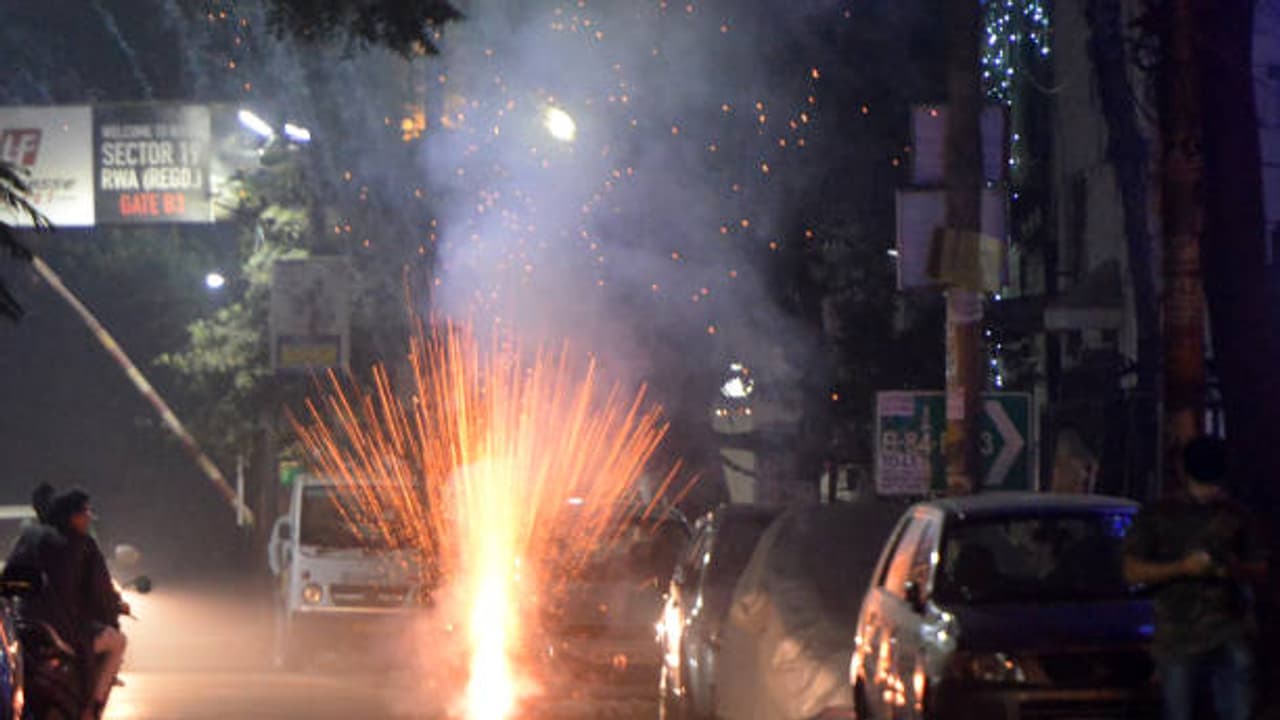As residents across the national capital celebrated Diwali with fireworks on Monday night, Delhi’s air quality took a sharp hit, with the majority of monitoring stations entering the ‘red zone’.
As the night sky over Delhi shimmered with fireworks this Diwali, the city woke up to a choking haze that cloaked its skyline and sent air quality levels into the ‘red zone’. Despite the Supreme Court’s restriction permitting only green firecrackers between 8 pm and 10 pm, the celebrations clearly outlasted the allotted hours. By late Monday night, nearly every monitoring station in the capital flashed alarming readings. Data revealed that 36 out of 38 air quality stations across Delhi had slipped into the ‘very poor’ to ‘severe’ category.
By 10 pm, Delhi’s overall Air Quality Index (AQI) stood at 344 (very poor), while four stations crossed 400-mark, signaling ‘severe’ conditions. The SAMEER app by the Central Pollution Control Board (CPCB) listed Wazirpur (423), Dwarka (417), Ashok Vihar (404), and Anand Vihar (404) among the worst-hit zones.
The city’s 24-hour average AQI, recorded at 4 pm Monday, settled at 345, climbing from Sunday’s 326, according to official data. Even by Tuesday morning, a thick smog shrouded Akshardham.
GRAP Activated
Authorities have already activated Stage II (GRAP-2) of the Graded Response Action Plan across Delhi-NCR, anticipating a further slide into the ‘severe’ zone over the next two days. Officials warned that the situation is likely to deteriorate further on Tuesday and Wednesday, urging residents to minimize outdoor exposure.
The CPCB classifies air quality as follows: 0–50: Good, 51–100: Satisfactory, 101–200: Moderate, 201–300: Poor, 301–400: Very Poor, 401–500: Severe.
Data from the Decision Support System (DSS) showed that transport emissions alone contributed 15.6% of the city’s pollution on Monday, while industrial sources and other sectors accounted for 23.3%.
The Commission for Air Quality Management (CAQM) had already enforced Stage II of GRAP across Delhi-NCR from Sunday, following an urgent review by the GRAP sub-committee, backed by forecasts from the India Meteorological Department (IMD) and the Indian Institute of Tropical Meteorology (IITM).
Earlier, on October 15, the Supreme Court had allowed the sale and bursting of green firecrackers within specific windows — 6 am to 7 pm and again 8 pm to 10 pm on Diwali eve and the day of the festival. But the data suggests many in the capital ignored those limits.
